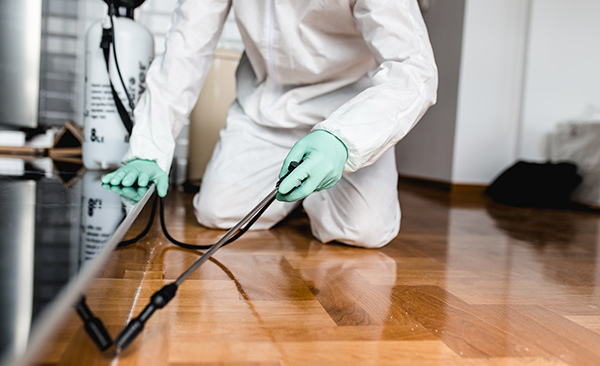Proven Pest Control that works every time.
Eco-Friendly Pest Control Approaches for Handling Wild Animals in Urban Areas
Urban areas usually find themselves at the crossway of human task and wild animals, leading to distinct difficulties in parasite management. Environment-friendly approaches emphasize sustainable coexistence, using techniques such as habitat adjustment and all-natural repellents to minimize human-wildlife problems. These strategies not only safeguard the atmosphere however additionally improve neighborhood involvement in wild animals monitoring. As urban populations remain to grow, understanding the dynamics of wildlife interactions becomes progressively vital. What cutting-edge approaches can be applied to make certain both eco-friendly equilibrium and city safety and security? Discovering this inquiry discloses an engaging landscape of prospective services.
Comprehending Urban Wildlife Characteristics
Comprehending Urban Wildlife Characteristics is crucial for establishing effective and green bug control techniques. Urban areas are significantly ending up being environments for different wildlife varieties, driven by elements such as environment fragmentation, food accessibility, and human encroachment. Acknowledging these dynamics enables a nuanced method to pest monitoring that lines up with eco-friendly principles.
Urban wild animals typically consists of types such as raccoons, squirrels, and birds, which adjust to city atmospheres, locating niches in environment-friendly spaces, parks, and also suburbs. Their presence can result in problems with people, specifically when they exploit personnels for food and sanctuary. Understanding the habits and ecological functions of these types educates techniques that decrease negative interactions while advertising biodiversity.
Furthermore, acknowledging the interdependencies within metropolitan ecosystems helps in determining essential areas for habitat conservation and restoration. This knowledge adds to the growth of incorporated pest management (IPM) methods that take into consideration the ecological balance, thus minimizing dependence on dangerous chemicals. By cultivating conjunction in between humans and urban wildlife, cities can create healthier atmospheres that benefit both citizens and regional environments, leading the means for lasting city living.
All-natural Repellents and Deterrents
All-natural repellents and deterrents use a sustainable option to standard bug control methods by utilizing the power of nature to maintain undesirable varieties away. These green remedies typically make use of plant-based active ingredients, essential oils, and various other normally happening compounds that discourage insects without hurting the environment.
One effective all-natural repellent is peppermint oil, which is recognized to push back rodents and insects. Its strong aroma is undesirable to numerous pests, making it a preferred selection for metropolitan settings. Vinegar and citrus peels can offer as deterrents, as their strong odors are commonly uninviting to numerous wildlife.
Additionally, diatomaceous planet is a natural powder that can be spread out in areas vulnerable to pest activity, efficiently dehydrating and discouraging pests without presenting risks to non-target varieties. Moreover, garlic sprays and neem oil are recognized for their capacity to ward off a wide array of insects, consisting of both insects and bigger wildlife.
Executing these all-natural repellents not only minimizes reliance on chemical pesticides however additionally promotes a much healthier city environment, fostering an extra balanced conjunction in between humans and wildlife. By making use of these approaches, metropolitan locations can effectively handle parasite populations while reducing ecological influence.
Habitat Adjustment Methods
Effective habitat modification methods play an essential function in lasting insect monitoring by changing the environment to make it much less for pest invasions. By comprehending the eco-friendly dynamics of urban locations, homeowner can implement tactical adjustments that prevent bugs while advertising biodiversity.
(Insect Control)One primary method entails keeping proper sanitation. This includes routine waste removal, protecting garbage containers, and eliminating standing water to decrease breeding sites for bugs and rodents. Furthermore, landscape design techniques such as picking indigenous plants can boost eco-friendly equilibrium, providing habitats for advantageous organisms while reducing resources for insects.
An additional crucial method is to seal entry factors in buildings. Examining and fixing splits in foundations, walls, and home windows can substantially decrease pest accessibility. Moreover, developing physical barriers, such as fences or plant buffers, can inhibit wild animals motion into human-inhabited locations.
Integrated Pest Administration Practices
Building upon environment modification strategies, integrated insect management (IPM) practices use an alternative approach to regulating parasite populations while decreasing environmental influence. IPM combines different techniques, consisting of organic, cultural, mechanical, and chemical controls, to attain reliable pest management.
Biological control includes the intro of natural killers or parasites to lower pest populaces. Social methods, such as crop turning and sanitation, disrupt pest life process and diminish their habitats - Pest control service. Mechanical controls, like catches and barriers, provide prompt remedy for pest stress without chemical treatment
Chemical controls are utilized as a last resource, concentrating on targeted applications that limit damage to non-target species and the environment. The option of eco-friendly chemicals, when required, is important to the IPM structure. Additionally, checking insect populaces and analyzing possible damages assists educate decision-making, i thought about this guaranteeing that interventions are prompt and effective.
Neighborhood Involvement and Education

(Wasp removal Port Charlotte)Workshops and informative sessions can equip citizens with understanding concerning indigenous varieties, environment preservation, and effective safe insect administration methods. Collaboration with institutions, local companies, and government companies better boosts academic outreach, making certain that crucial details reaches varied audiences.
Moreover, community-led initiatives, such as area clean-up days and environment repair projects, not just advertise biodiversity yet also strengthen community ties. Pest Control. By encouraging locals to share their experiences and observations, communities can develop targeted approaches that deal with details neighborhood parasite issues
Integrating responses from homeowners into insect monitoring intends enables a more receptive and flexible method to wild animals difficulties. Eventually, informed and involved communities are vital to attaining lasting success in green pest control, resulting in much healthier city settings that value both human and eco-friendly demands.

Final Thought
In final thought, environment-friendly bug control comes close to deal lasting remedies for managing metropolitan wildlife. By focusing on habitat modification, utilizing all-natural repellents, and carrying out integrated pest monitoring methods, neighborhoods can foster an unified coexistence with neighborhood animals.